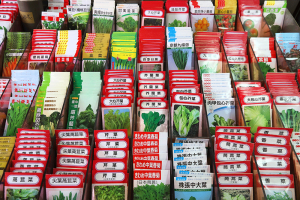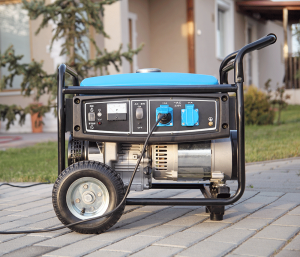Why Emergency Personnel Safety Equipment Must Be High-Quality
February 4, 2023 by Guest Author
Filed under General Emergency Supplies
When flying in an airplane, if an emergency occurs, it is important to place the oxygen mask over your own face before you assist someone else. This is because if you are attempting to help another person but faint due to lack of oxygen, you will do them no good. In much the same way, rescue workers need proper safety equipment when they work to assist citizens. If they do not have the proper equipment, their ability to lend aid becomes limited. Therefore, it is imperative they are provided with high-quality safety gear.
Harnesses:
Rescue workers require high-quality harnesses when performing rescues. For example, the brave people who risk their lives hanging from helicopters in an attempt to pluck some wayward soul from raging floodwaters require proper safety harnesses in order to perform their life-saving job.
Ropes:
Another piece of necessary equipment is a well-made rope. Many accident scenarios require rescue workers to use a rope when aiding another person. When workers are in harnesses, they sometimes use ropes as a safety line in order to remain safe.
Connectors and hooks:
The harnesses and ropes are great, but without connectors and hooks, they are useless. Connectors keep rescue workers firmly attached to their harnesses and allow them to hook on victims as they assist them.
Jackets:
A rescue worker’s visibility to those around them is very important. For example, a worker aiding in the event of an accident should wear a reflective coat or vest to make themselves easily visible to victims.
Flashlights:
There are many varieties of rescue work, and almost all of them will benefit from a high-quality flashlight. After natural disasters, first responders are likely to deal with power outages. A good flashlight will prove invaluable in such a situation.
Radios:
Communication is vital among rescue workers. Creating a calm and controlled environment is one of the first priorities of rescue personal. Knowing the location of other rescue workers or coordinating rescue efforts is also imperative.
Hard hats or helmets:
In some situations, rescue personal would benefit from hard hats or helmets. Helmets are often worn by emergency workers. Many of them have protection for the eyes built-in. Hard hats are necessary on any sites where the potential of falling debris exists.
Rescue workers serve their communities selflessly. High-quality safety gear keeps them safe as they seek to keep us safe. If their equipment is old or worn out, workers become limited in their rescue performance. For that reason, all rescue workers require high-quality safety gear for any job that presents itself.
Eric Blair writes about construction safety and the importance of having proper equipment from a reputable dealer like Fall Protection USA.
Emergency Seed Supplies for a Disaster
February 3, 2023 by admin
Filed under Food Supplies, General Emergency Supplies
Growing your own food can be a valuable source of nutrition and security during an emergency, but access to seeds can be limited. It is important to have a stockpile of emergency seed supplies to ensure that you have the necessary materials to start a vegetable garden when the time comes.
When selecting emergency seed supplies, it is important to choose seeds that are easy to grow, have a high yield, and are versatile in terms of their uses. Some good options include:
- Leafy greens: Leafy greens like lettuce, spinach, and kale are quick-growing, nutritious, and can be used in a variety of dishes.
- Root crops: Root crops like carrots, beets, and turnips are easy to grow and store, making them an excellent choice for an emergency seed supply.
- Squash: Squash plants are hardy and produce a large yield, making them a great option for an emergency seed supply.
- Tomatoes: Tomatoes are a staple in many diets and can be used in a variety of dishes, making them an important part of any emergency seed supply.
 When storing your emergency seed supplies, it is important to keep them in a cool, dry place to ensure their viability. Consider using airtight containers or vacuum-sealed bags to help protect your seeds from moisture and temperature fluctuations.
When storing your emergency seed supplies, it is important to keep them in a cool, dry place to ensure their viability. Consider using airtight containers or vacuum-sealed bags to help protect your seeds from moisture and temperature fluctuations.
In addition to selecting and storing your seed supplies, it is also important to have a plan in place for starting and maintaining a garden during an emergency. This may include access to tools, water, and soil, as well as a plan for protection from animals and insects.
Having a stockpile of emergency seed supplies can provide peace of mind and ensure that you have access to fresh, nutritious food in the event of a disaster. By selecting easy-to-grow, high-yielding crops, and properly storing your seed supplies, you can ensure that you have the necessary materials to start a vegetable garden during an emergency.
Prepare to Garden after a Disaster Situation
February 2, 2023 by admin
Filed under Survival Tools
Gardening can be a powerful tool for recovery and healing after a natural disaster. In the aftermath of a disaster, communities can come together to create community gardens as a way to bring people together and provide access to fresh, healthy food. Additionally, gardening can provide a sense of normalcy and stability, helping people to reclaim a sense of control over their lives and surroundings.
The first step in developing a garden in a disaster situation is to assess the area and determine the most suitable location. Factors to consider include access to sunlight, water, and soil quality. If necessary, the soil can be amended with compost or other organic matter to improve fertility.
 Next, it is important to consider the types of plants that will be grown in the garden. In the aftermath of a disaster, it is important to choose hardy, fast-growing crops that can be harvested quickly. These might include leafy greens, root crops, and other vegetables that can be grown in a short amount of time. In addition to providing food, these crops can also help to build soil health, which will be important for future gardening efforts.
Next, it is important to consider the types of plants that will be grown in the garden. In the aftermath of a disaster, it is important to choose hardy, fast-growing crops that can be harvested quickly. These might include leafy greens, root crops, and other vegetables that can be grown in a short amount of time. In addition to providing food, these crops can also help to build soil health, which will be important for future gardening efforts.
In terms of water access, it is important to consider sources of water for irrigation. In many cases, communities can utilize rainwater harvesting systems or local streams to provide water for the garden. It is also important to consider the water usage of different crops, as some crops require more water than others.
Community involvement is a critical aspect of garden development in a disaster situation. Engaging the local community in the planning and implementation of the garden can help to build a sense of ownership and responsibility, which can be crucial in ensuring the success of the garden. Additionally, community gardens can provide opportunities for skill-building and education, such as training on sustainable gardening practices and healthy food preparation.
It is also important to consider the potential long-term benefits of the garden. In the aftermath of a disaster, people often struggle with food insecurity and limited access to fresh, healthy food. Community gardens can provide a sustainable source of food for years to come, helping to improve food security and access to healthy food in the community. Additionally, community gardens can serve as a source of pride and inspiration, helping to bring people together and foster a sense of community.
Finally, it is important to plan for the maintenance and management of the garden over time. This may involve establishing a volunteer group to take care of the garden, or hiring a professional gardener to manage the day-to-day operations. Additionally, it may be necessary to plan for future expansion or replanting to ensure the long-term sustainability of the garden.
The development of a garden in a disaster situation can be a powerful tool for recovery and healing. By considering factors such as location, plant selection, water access, community involvement, and long-term planning, communities can create community gardens that provide access to fresh, healthy food and serve as a source of pride and inspiration. By coming together and working towards a common goal, communities can help to build a stronger and more resilient future.
Picking the Right Generator for an Emergency
February 1, 2023 by admin
Filed under General Emergency Supplies
In emergency situations, having a reliable source of power can mean the difference between safety and chaos. Generators are one of the most effective solutions to provide backup power during outages, natural disasters, and other emergency events. However, not all generators are created equal. Choosing the right generator for your needs can be a daunting task, but it is essential to ensure that you have the best equipment to meet your needs in a crisis.
There are two main types of generators: portable and standby. Portable generators are smaller and can be moved from place to place, making them ideal for outdoor activities, camping trips, and emergency backup power. Standby generators are larger and are typically permanently installed outside the home or business. They automatically turn on when the main power goes out and are ideal for those who require constant and reliable power.
 When choosing a generator, the first consideration is the type of fuel that the generator uses. There are three main types of fuel: gasoline, propane, and diesel. Gasoline is the most commonly used fuel for portable generators, as it is readily available and relatively cheap. Propane is a clean-burning fuel that is easy to store and transport, making it an excellent choice for backup power in emergency situations. Diesel is a more expensive fuel option, but it is more efficient and has a longer lifespan than gasoline.
When choosing a generator, the first consideration is the type of fuel that the generator uses. There are three main types of fuel: gasoline, propane, and diesel. Gasoline is the most commonly used fuel for portable generators, as it is readily available and relatively cheap. Propane is a clean-burning fuel that is easy to store and transport, making it an excellent choice for backup power in emergency situations. Diesel is a more expensive fuel option, but it is more efficient and has a longer lifespan than gasoline.
The next consideration is the generator’s power output. Generators are rated by the amount of power they can produce, measured in watts. The amount of power you need will depend on what you plan to run on the generator, including lights, appliances, and tools. Consider the total power requirement of all the devices you plan to run, and choose a generator that can handle that amount of power.
Another important factor to consider is the generator’s fuel efficiency. This refers to the amount of fuel the generator uses to produce a certain amount of power. The more fuel-efficient the generator, the longer it can run on a single tank of fuel, making it more practical in emergency situations.
The generator’s noise level is also an important factor to consider. In emergency situations, you may need to use the generator at night, so it is important to choose a generator that operates quietly to avoid disturbing your neighbors.
Ease of use and maintenance is another critical factor. Portable generators should be easy to start and operate, with clear instructions and safety features. Standby generators should be easy to install and maintain, with readily available parts and support.
Finally, it is important to choose a generator that is safe and reliable. Look for generators that are certified by organizations such as Underwriters Laboratories (UL) or the American Gas Association (AGA) to ensure that they meet safety standards.
Choosing the right generator for your emergency needs requires careful consideration of several factors, including the type of fuel, power output, fuel efficiency, noise level, ease of use and maintenance, and safety and reliability. Take the time to research your options and choose a generator that meets your needs and provides peace of mind during an emergency.








